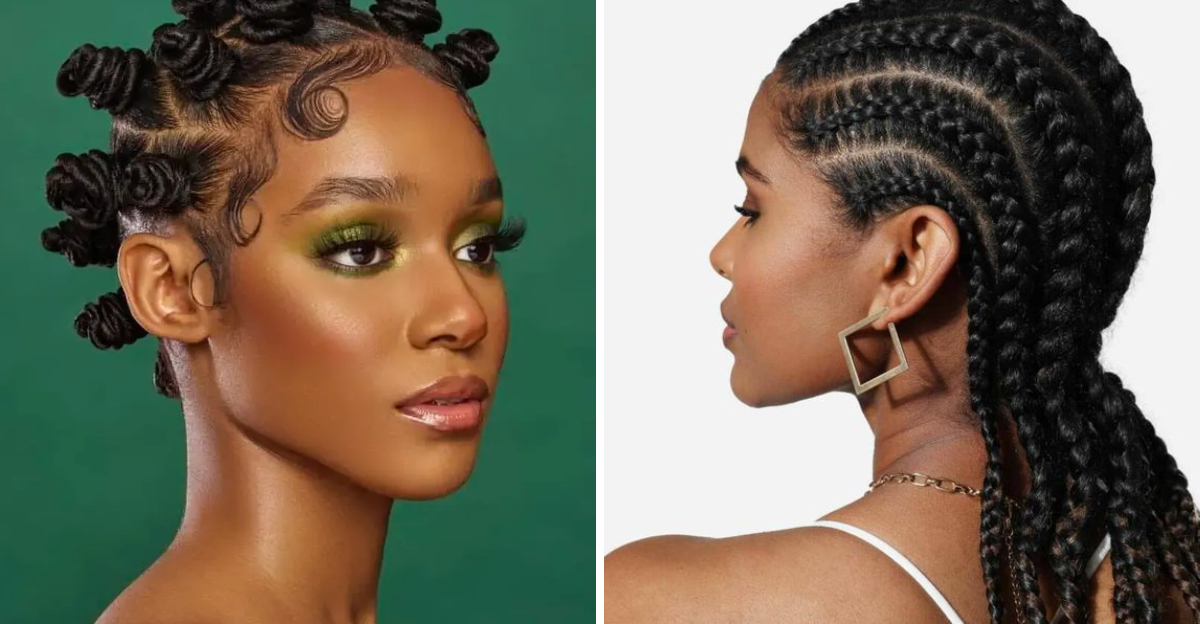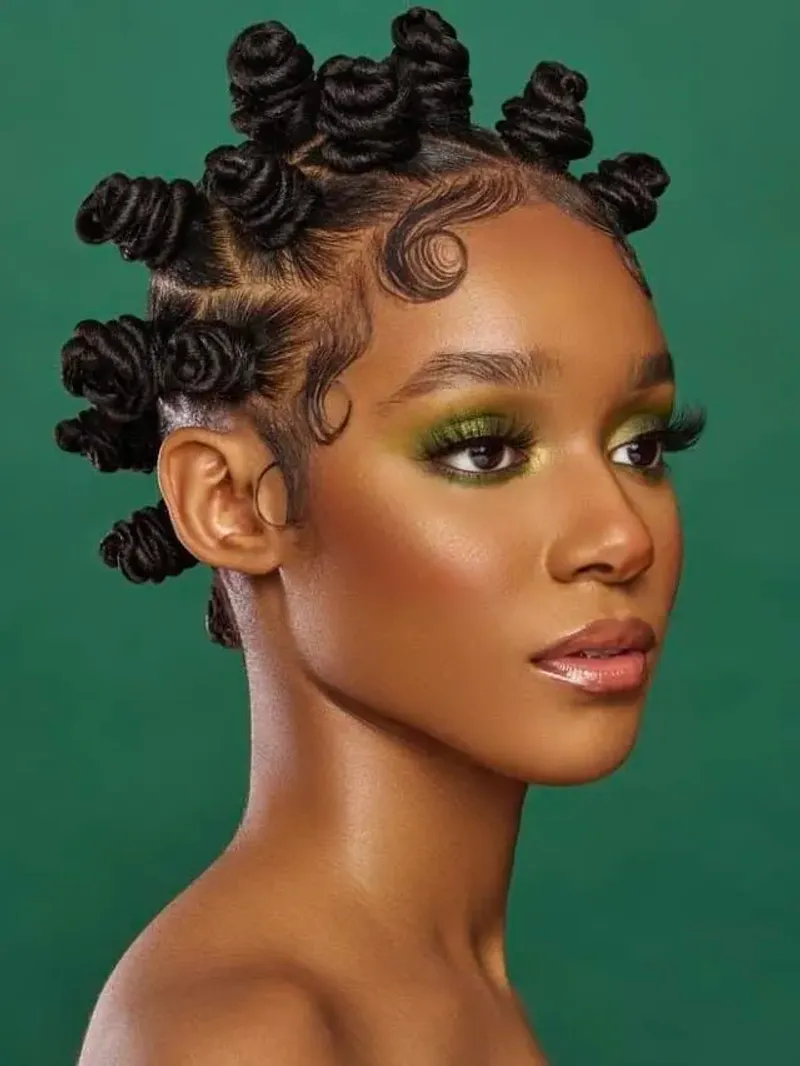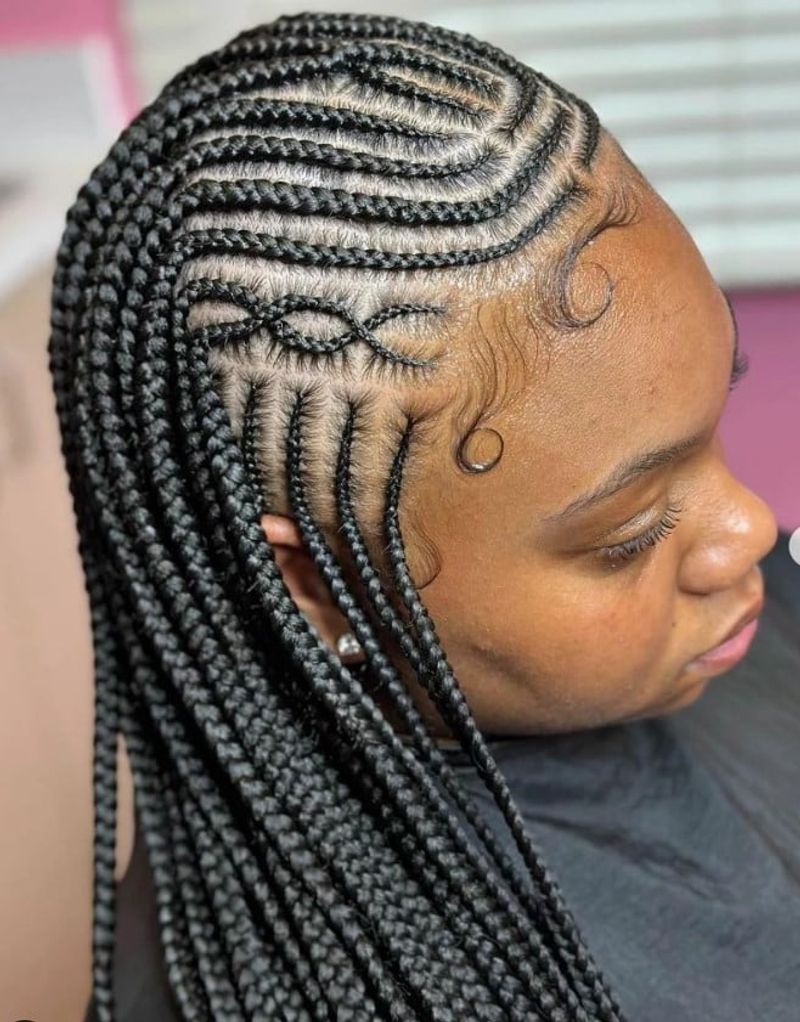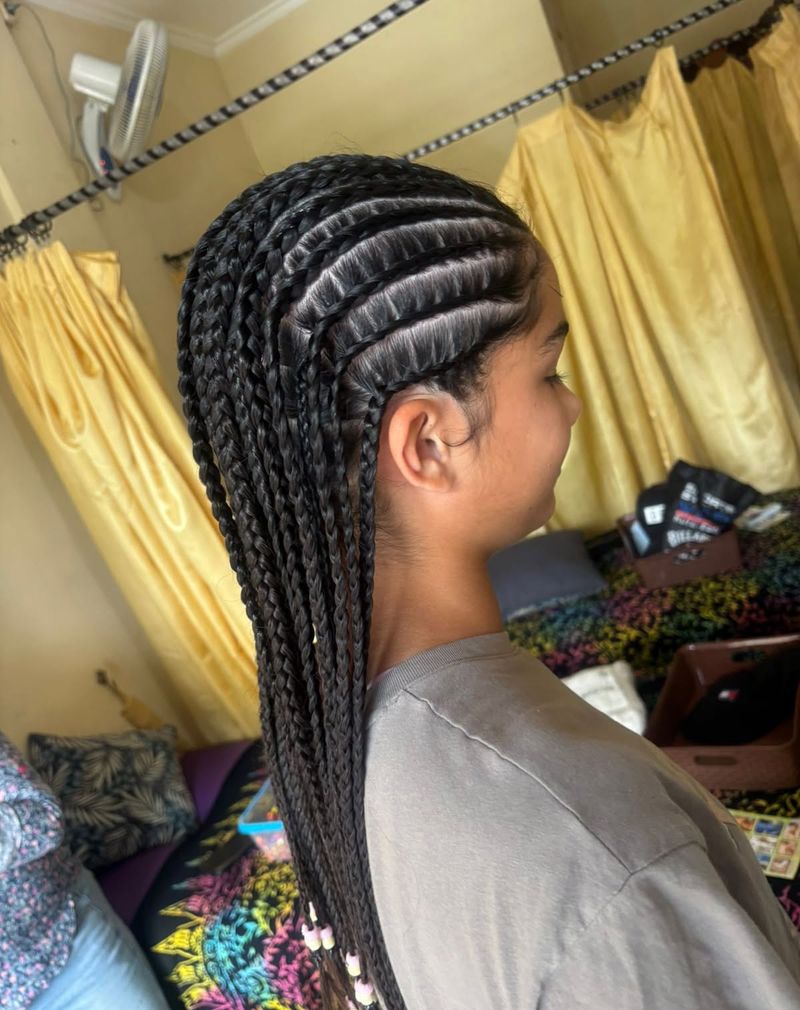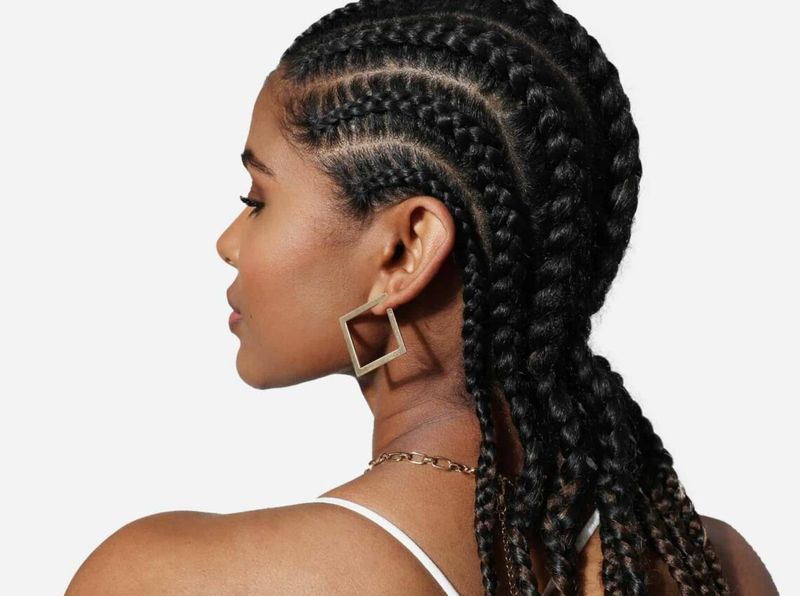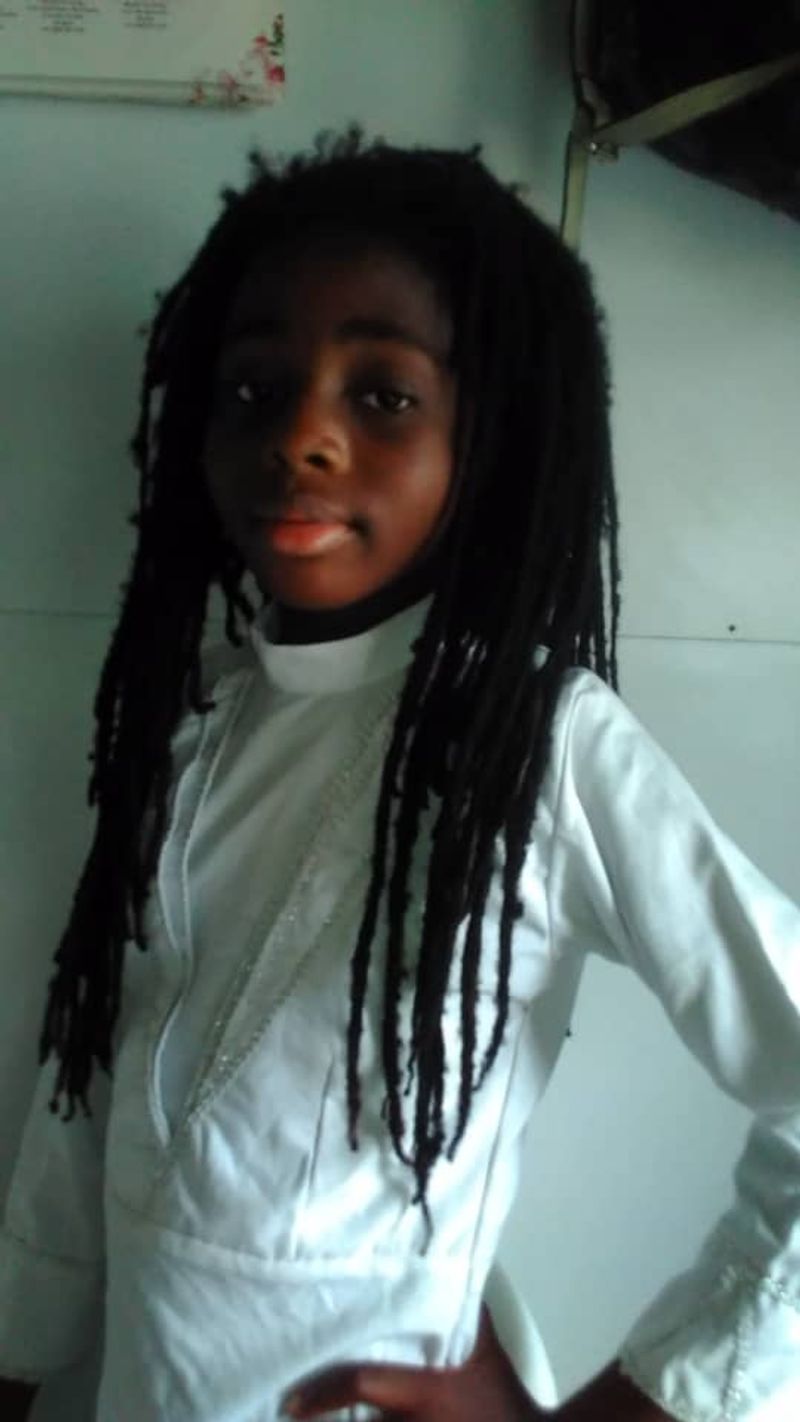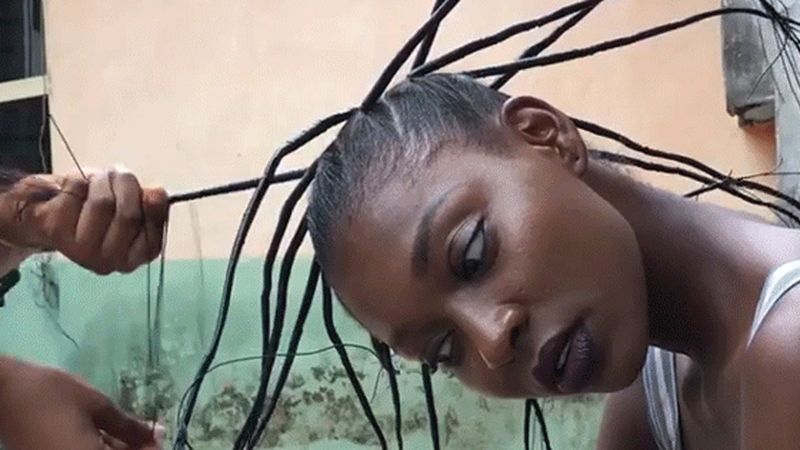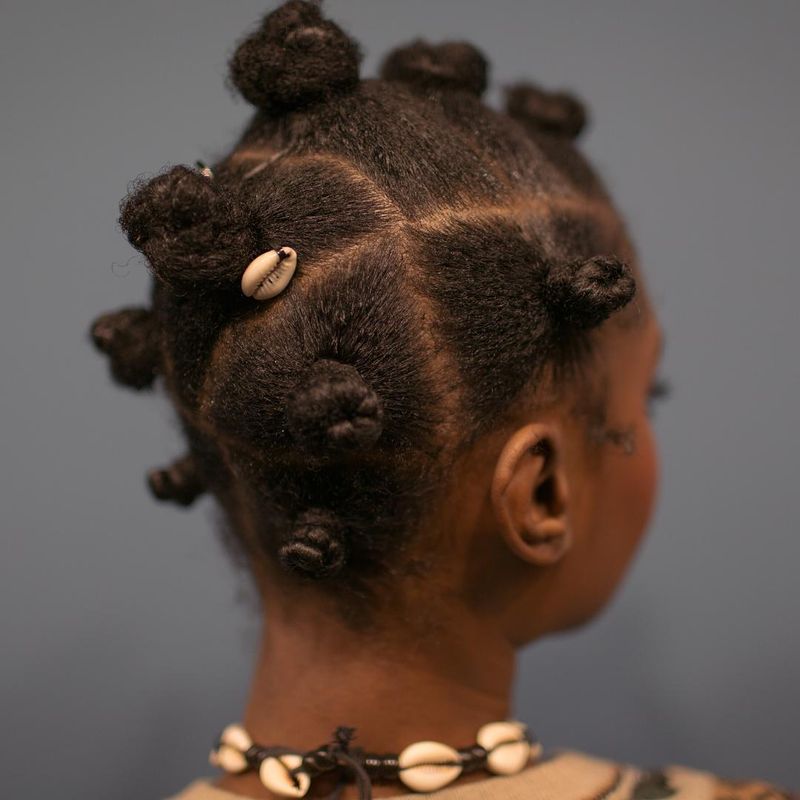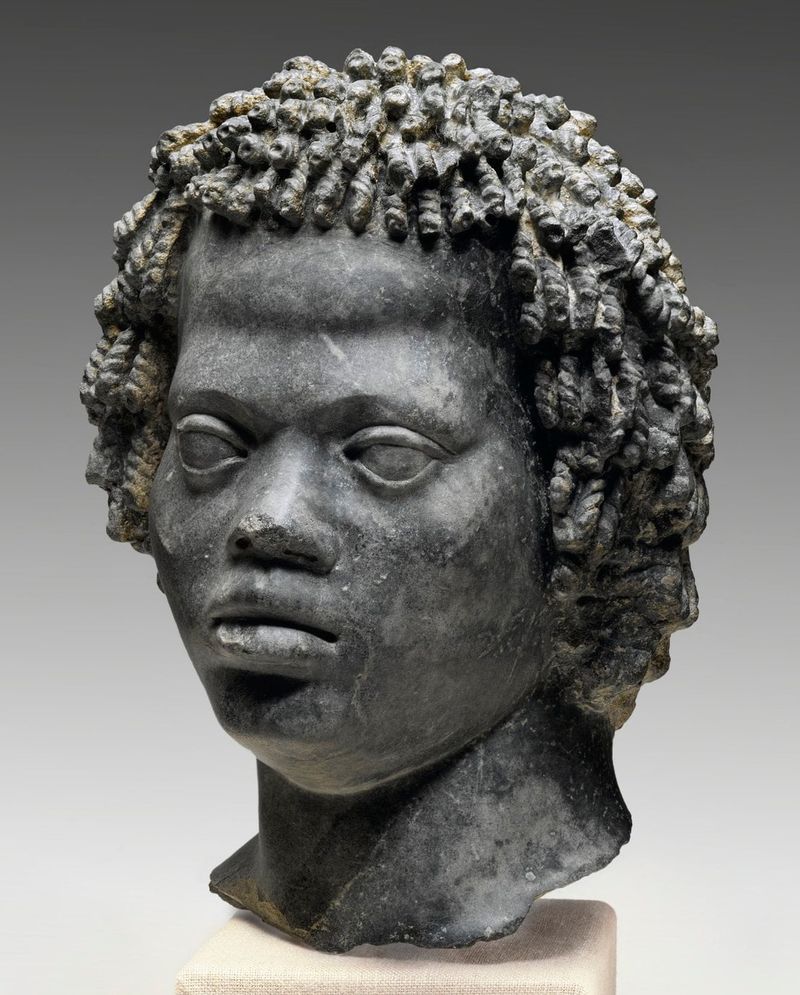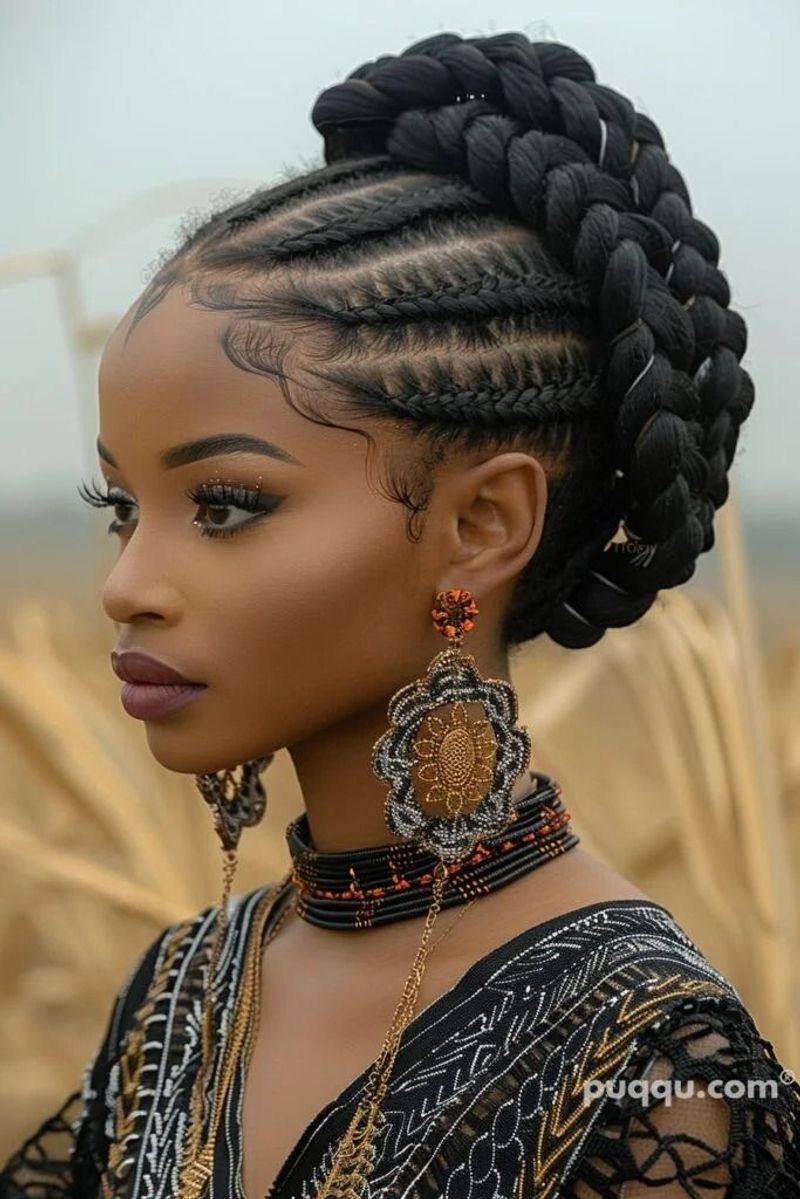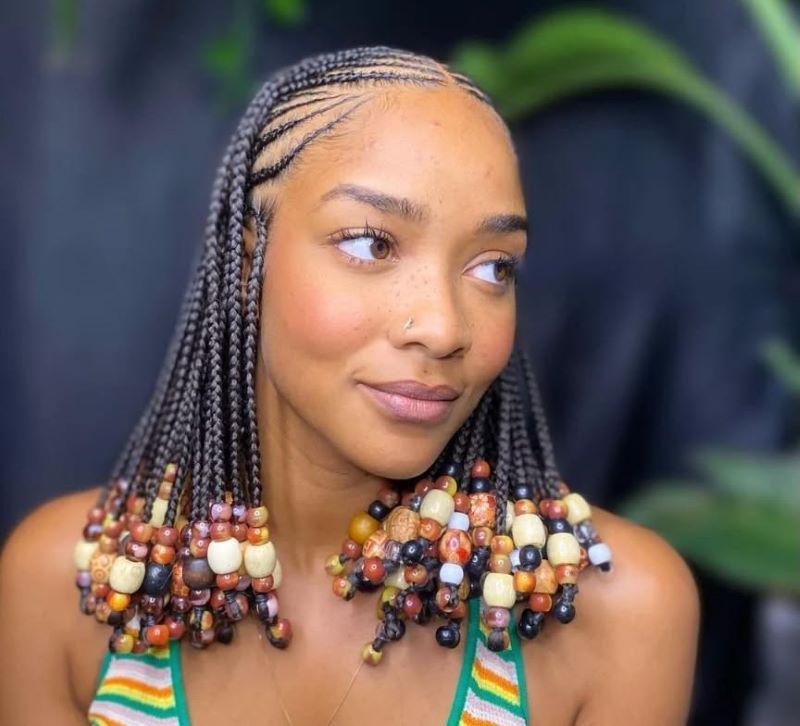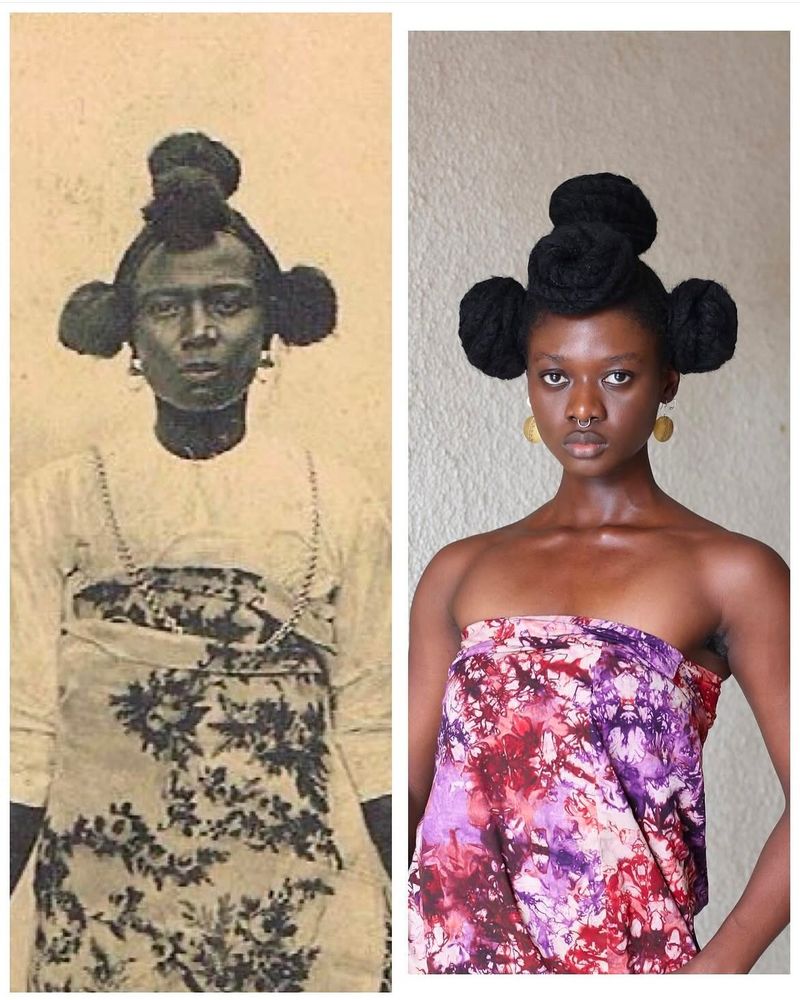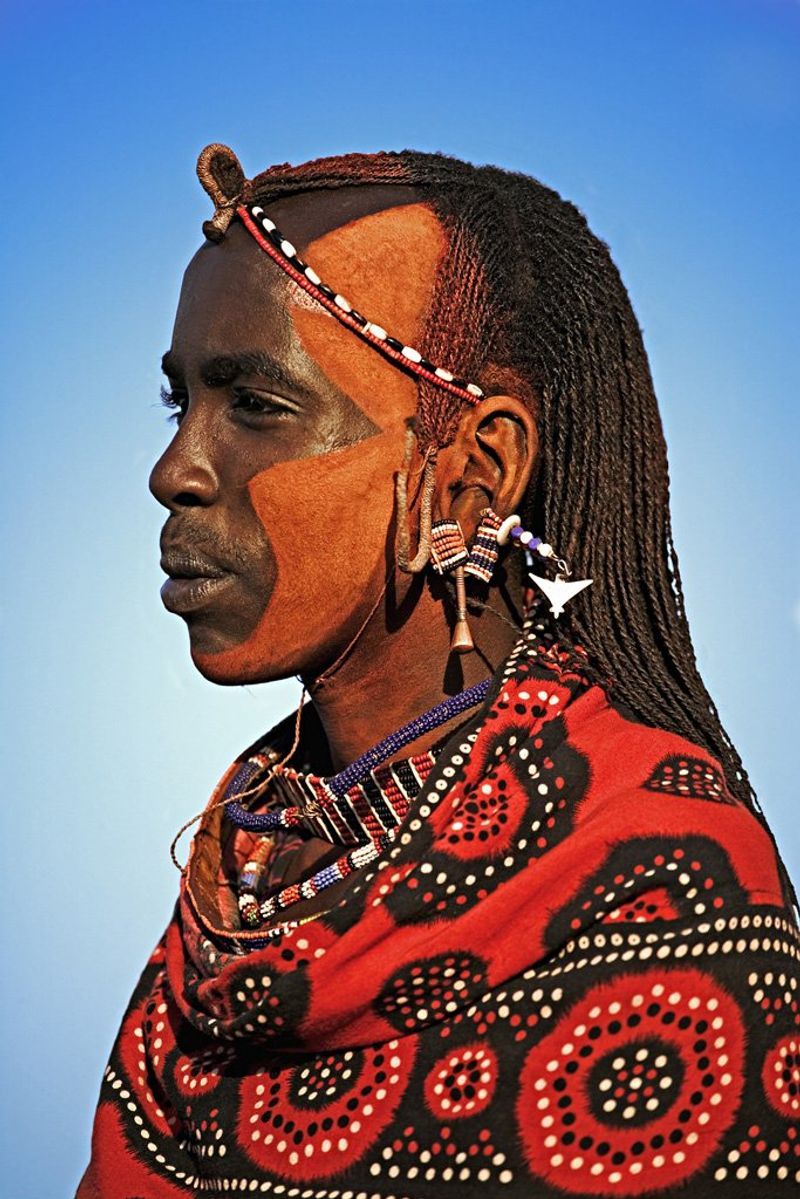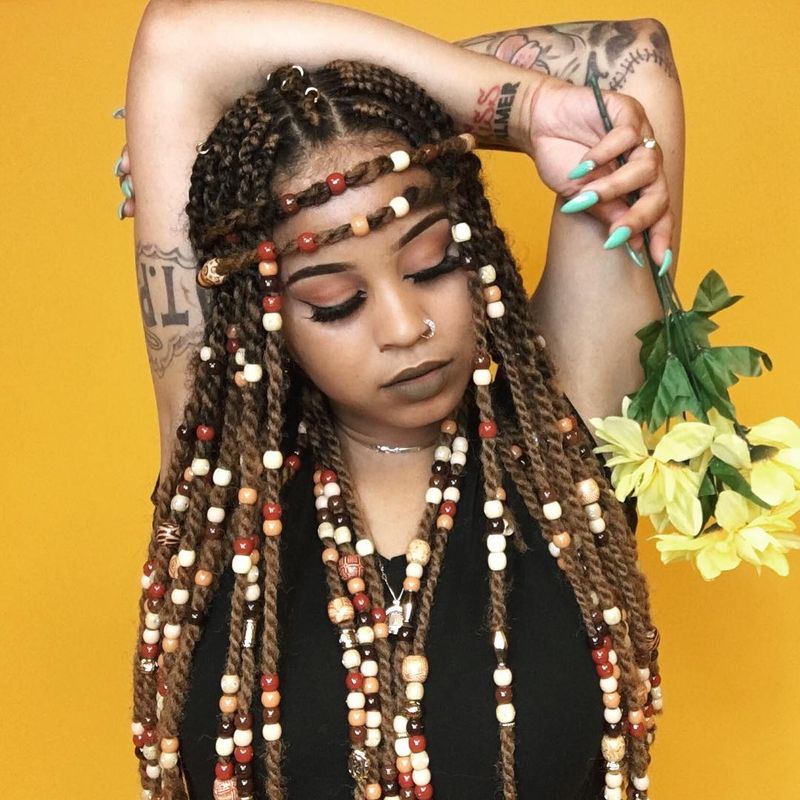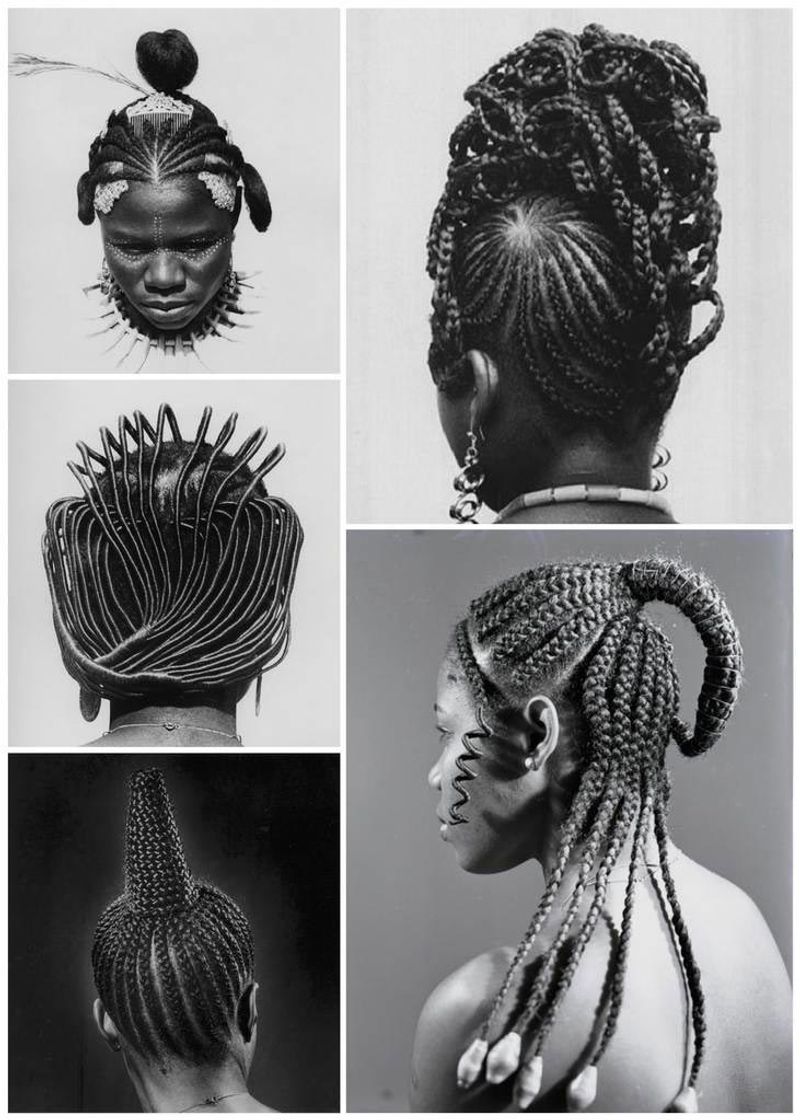Across Africa, hairstyles have always been more than just fashion statements—they’re cultural symbols with deep historical significance.
For generations, grandmothers have passed down traditional braiding and styling techniques to ensure these important cultural markers aren’t lost to time. These intricate hairstyles tell stories of identity, social status, and tribal belonging that connect young women to their ancestors.
1. Bantu Knots
Small, coiled buns positioned across the head create this iconic style originating from the Zulu people of South Africa.
Named after the Bantu ethnic groups, these knots served as both protection for natural hair and symbols of a woman’s marital status in traditional communities.
Related: -Thinking About Box Braids? Here Are 17 Things You Should Know
2. Fulani Braids
Characterized by cornrows braided toward the center of the head with hanging braids around the temples and neck.
This elegant style originates from the Fulani people of West Africa, where the intricate patterns often indicated age, wealth, and marital status.
3. Le treccine
Rows of tight braids woven close to the scalp create distinctive patterns that have served African communities for centuries.
Grandmothers teach specific designs that once identified tribal affiliations. During slavery, cornrows even helped map escape routes to freedom.
4. Ghana Braids
Starting small at the scalp and gradually growing thicker toward the ends, these stunning braids originated in—you guessed it—Ghana!
Traditionally created using extensions of human or synthetic hair, they’re admired for both their beauty and remarkable durability in harsh climates.
5. Dada Locks
Before Rastafarian culture adopted them, these natural locks were spiritual symbols across many African societies.
Grandmothers pass down rituals for starting and maintaining these locks, which in Yoruba culture were believed to connect wearers to divine energies.
6. Thread Wrapping
Colorful threads wound tightly around sections of hair create stunning geometric patterns.
Popular in Nigeria and Cameroon, grandmothers select specific colors for celebrations, mourning, or spiritual protection. The tight wrapping also helps straighten curly hair without heat.
7. Zulu Knots
Larger than Bantu knots, these substantial twisted buns symbolize a woman’s readiness for marriage in Zulu culture.
Traditionally shaped using clay and animal fat, modern grandmothers now teach simplified versions while still honoring the style’s connection to womanhood ceremonies.
8. Nubian Coils
Ancient Egyptian wall paintings depict these sophisticated coil arrangements dating back thousands of years.
Grandmothers from Sudan and Egypt teach techniques for shaping natural hair into defined coils, often adorned with gold thread or beads for special occasions.
9. Twisted Updo with Cowrie Shells
Twisted sections of hair gathered high on the head, decorated with symbolic cowrie shells.
Once used as currency across Africa, cowrie shells now serve as protective talismans. Grandmothers teach specific placement patterns representing family lineage or spiritual protection.
10. Crown Braids
Braids encircling the head like royal crowns originated in several African kingdoms as symbols of nobility.
Grandmothers teach techniques for creating these majestic styles, which historically signified royal bloodlines. Today they remain popular for weddings and coming-of-age ceremonies.
11. Fula Braids
Long, hanging braids with distinctive side partings and decorative elements distinguish this style from the Fula people.
Grandmothers teach grandchildren to incorporate amber, silver coins, and glass beads—each with specific meanings related to protection, prosperity, or fertility.
12. Calabash Cuts
Inspired by the shape of calabash gourds, these geometric haircuts were traditional markers of tribal affiliation.
Grandmothers pass down precise cutting techniques using traditional tools. The patterns often tell family stories or represent clan totems through their intricate designs.
13. Braided Mohawk
Contrary to popular belief, mohawk-style arrangements originated in several African cultures long before punk rock claimed them.
Grandmothers teach techniques for creating these dramatic styles, which traditionally signified warrior status or readiness for battle in certain communities.
14. Twisted Crowns with Beads
Sections of hair twisted into rope-like strands and arranged in circular patterns adorned with colorful beads.
Grandmothers select bead colors and patterns with specific meanings—red for vitality, blue for peace, white for purity—teaching not just technique but cultural symbolism.
15. Stacked Braids
Multiple layers of braids stacked vertically create impressive height and visual impact.
Popular among Ethiopian and Eritrean women, these elaborate styles once indicated marital status and number of children. Grandmothers teach precise stacking techniques that balance comfort with dramatic presentation.

